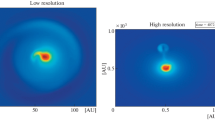Abstract
The current era of the fourth industrial revolution is inevitably leading to a widening gap between actively and passively developing countries, and the strategy of scientific and technological breakthrough announced in the Russian Federation is the only way to achieve the status of a world power. Modern progress is based on infinite growth rates of computational and informational capacities of the post-petaflop scales, which provide previously unthinkable opportunities for acquiring new fundamental knowledge and introducing innovations in production, natural resource management, and the economic and social spheres. The key role here is played by predictive mathematical modeling of processes and phenomena, including theoretical and applied research, supercomputation, and large-scale computer experiments, operations with large data, and artificial intelligence. Emerging super problems require huge amounts of new-generation intelligent software, which is impossible without the formulation of concepts and paradigms of activity, architectural solutions, and constructive technologies. Global trends are leading to the development of integrated computing and information environments that form an instrumental environment for automating the construction of models and algorithms, their mapping onto supercomputer platforms, and the creation of comfortable interfaces for users with different professional backgrounds. Such an ecosystem is designed for a long life cycle with the continuous development and coordinated participation of various groups of developers, as well as widespread demand, thereby leading to the formation of a new industry with mass professions with a high level of supercomputer literacy. The listed scientific and technological challenges require competent organizational and infrastructural solutions, including the interdepartmental coordination of academic, educational, and production teams. Mathware and software of supercomputer modeling should permeate all spheres of human activity similarly to the circulatory or nervous system and transmit the value of new productive forces that improve the quality of life and ensure the sustainable development of society to become knowledgeable on intensive technologies.
Similar content being viewed by others
References
https://www.1tv.ru/news/2018-08-28/351287-vladimir_putin_v_novosibirske_posetil_mezhdunarodnyy_forum_tehnoprom_2018.
R. Kurzweil, How to Create a Mind: The Secret of Human Thought Revealed (Viking Press, New York, 2012).
V. I. Arnol’d, What Is Mathematics? (MTsNMO, Moscow, 2004) [in Russian].
Software for Exascale Computing-SPPEXA 2013–2015, Ed. by H. J. Bungartz, P. Neuman, and W. Nagel (Springer International Publ., 2016).
Author information
Authors and Affiliations
Corresponding author
Additional information
Valerii Pavlovich Il’in, Dr. Sci. (Phys.-Math.), is Chief Researcher of the Institute of Computational Mathematics and Mathematical Geophysics, RAS Siberian Branch, and a Professor of Novosibirsk State University and Novosibirsk State Technical University.
Russian Text © The Author(s), 2019, published in Vestnik Rossiiskoi Akademii Nauk, 2019, Vol. 89, No. 3, pp. 232–242.
Rights and permissions
About this article
Cite this article
Il’in, V.P. How to Reorganize Computational Science and Technologies?. Her. Russ. Acad. Sci. 89, 250–258 (2019). https://doi.org/10.1134/S1019331619030031
Received:
Revised:
Accepted:
Published:
Issue Date:
DOI: https://doi.org/10.1134/S1019331619030031




